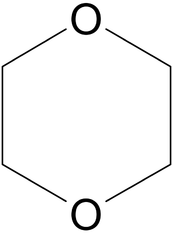 In June 2016, the Toxic Substances Control Act, the law that governs chemicals in household and industrial products, was updated for the first time in nearly 40 years. In the past, before the agency could request safety data from the industry for new chemicals, the agency had to first show that a chemical may pose a risk. The passing of the revised TSCA allows the Environmental Protection Agency to request safety data and assess the safety of chemicals that are currently being used in a variety of products. In November, the agency selected the first 10 chemicals to evaluate under the new guidelines. The chemicals included:
In June 2016, the Toxic Substances Control Act, the law that governs chemicals in household and industrial products, was updated for the first time in nearly 40 years. In the past, before the agency could request safety data from the industry for new chemicals, the agency had to first show that a chemical may pose a risk. The passing of the revised TSCA allows the Environmental Protection Agency to request safety data and assess the safety of chemicals that are currently being used in a variety of products. In November, the agency selected the first 10 chemicals to evaluate under the new guidelines. The chemicals included:
- 1,4-Dioxane (solvent, stabilizer)
- 1-Bromopropane (solvent)
- Asbestos (wide variety of uses, e.g. building materials)
- Carbon Tetrachloride (precursor in refrigerant manufacturing, solvent)
- Cyclic Aliphatic Bromide Cluster (flame retardant)
- Methylene Chloride (solvent)
- N-methylpyrrolidone or “NMP” (solvent)
- Pigment Violet 29 (pigment)
- Tetrachloroethylene, also known as perchloroethylene or “perc” (dry cleaning)
- Trichloroethylene or “TCE” (solvent)
According to an EPA news release, the chemicals were drawn from EPA’s 2014 TSCA Work Plan, a list of 90 chemicals selected based on their potential for high hazard and exposure as well as other considerations.
Jim Jones, assistant administrator of the of Office of Chemical Safety and Pollution Prevention, stated, “Under the new law, we now have the power to require safety reviews of all chemicals in the marketplace. We can ensure the public that we will deliver on the promise to better protect public health and the environment.”
When the list is published in the Federal Register it will trigger a statutory deadline to complete risk evaluations for these chemicals within three years. This evaluation will determine whether the chemicals present an unreasonable risk to humans and the environment. If it is determined that a chemical presents an unreasonable risk, EPA must mitigate that risk within two years.
Under the newly amended law, EPA must release a scoping document within six months for each chemical. This will include the hazard(s), exposure(s), conditions of use, and the potentially exposed or susceptible subpopulation(s) the agency plans to consider for the evaluation.
Additional chemicals will be designated for evaluation, and all of the remaining Work Plan chemicals will be reviewed for their potential hazard and exposure. For each risk evaluation that EPA completes, TSCA requires that EPA begin another. Within the first 180 days, EPA must have 10 ongoing risk evaluations. By the end of 2019, EPA must have at least 20 chemical risk valuations ongoing at any given time.
The EPA’s review process of existing chemicals under the TSCA guidelines will follow three main steps:
- Prioritization: Risk-based screening process to determine which chemical substances could pose an unreasonable risk of injury to health or the environment. Chemicals will be identified as either “high” or “low” priority substances.
- Risk Evaluation: Substances labeled as high priority will require the EPA complete a risk evaluation, under deadline, on the chemical to determine its safety and whether poses an unreasonable risk of injury to health or the environment.
- Risk Management: The EPA will develop a rule to mitigate the risk of substances that present an unreasonable risk of injury to health or the environment.
Additional highlights from the revised TSCA:
- EPA now required to make an affirmative finding on the safety of new chemical or significant new use of an existing chemical before it is allowed into the marketplace
- Allows EPA to collect up to $25 million annually in user fees from chemical manufacturers and processors for data and chemical reviews.
- Mercury Export Ban Act (MEBA) requirements were amended, requiring EPA to create an inventory of supply, use, and trade of mercury and mercury compounds; and prohibits export of certain mercury compounds
Teledyne Tekamr's VOC Purge and Trap Concentrators are commonly utilized in conjunction with Gas Chromatography and Mass Spectrometry (GC/MS) for the determination 1,4-Dioxane and other compounds mentioned in this blog post. Visit our website for more information on these Purge and Trap Concentrators or contact us.
